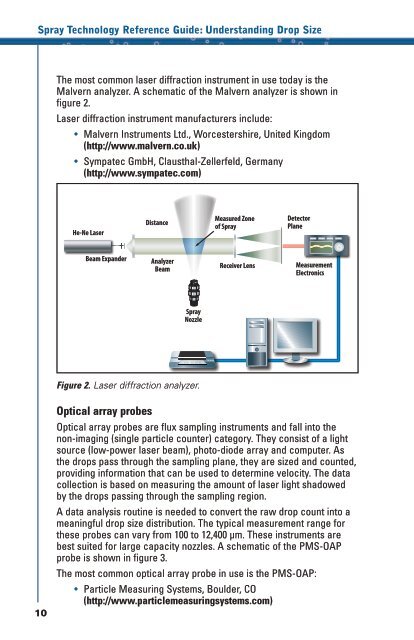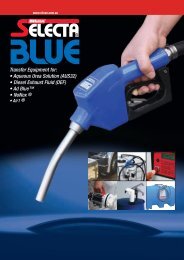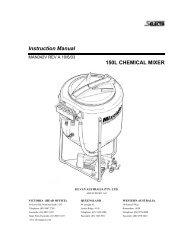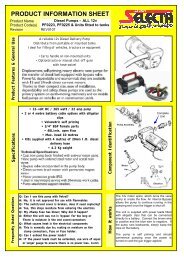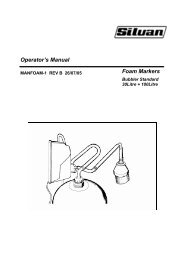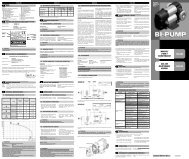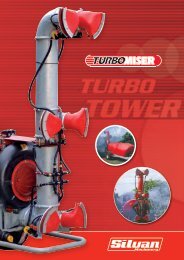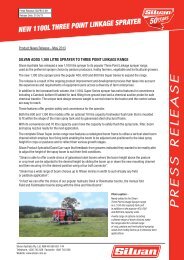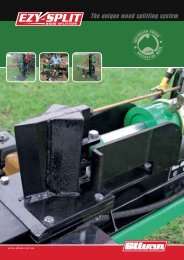Spray Technology Reference Guide: Understanding Drop ... - TeeJet
Spray Technology Reference Guide: Understanding Drop ... - TeeJet
Spray Technology Reference Guide: Understanding Drop ... - TeeJet
Create successful ePaper yourself
Turn your PDF publications into a flip-book with our unique Google optimized e-Paper software.
<strong>Spray</strong> <strong>Technology</strong> <strong>Reference</strong> <strong>Guide</strong>: <strong>Understanding</strong> <strong>Drop</strong> Size<br />
The most common laser diffraction instrument in use today is the<br />
Malvern analyzer. A schematic of the Malvern analyzer is shown in<br />
figure 2.<br />
Laser diffraction instrument manufacturers include:<br />
• Malvern Instruments Ltd., Worcestershire, United Kingdom<br />
(http://www.malvern.co.uk)<br />
• Sympatec GmbH, Clausthal-Zellerfeld, Germany<br />
(http://www.sympatec.com)<br />
<br />
<br />
<br />
<br />
<br />
<br />
<br />
<br />
<br />
<br />
<br />
<br />
<br />
<br />
<br />
Figure 2. Laser diffraction analyzer.<br />
<br />
10<br />
Optical array probes<br />
Optical array probes are flux sampling instruments and fall into the<br />
non-imaging (single particle counter) category. They consist of a light<br />
source (low-power laser beam), photo-diode array and computer. As<br />
the drops pass through the sampling plane, they are sized and counted,<br />
providing information that can be used to determine velocity. The data<br />
collection is based on measuring the amount of laser light shadowed<br />
by the drops passing through the sampling region.<br />
A data analysis routine is needed to convert the raw drop count into a<br />
meaningful drop size distribution. The typical measurement range for<br />
these probes can vary from 100 to 12,400 µm. These instruments are<br />
best suited for large capacity nozzles. A schematic of the PMS-OAP<br />
probe is shown in figure 3.<br />
The most common optical array probe in use is the PMS-OAP:<br />
• Particle Measuring Systems, Boulder, CO<br />
(http://www.particlemeasuringsystems.com)


